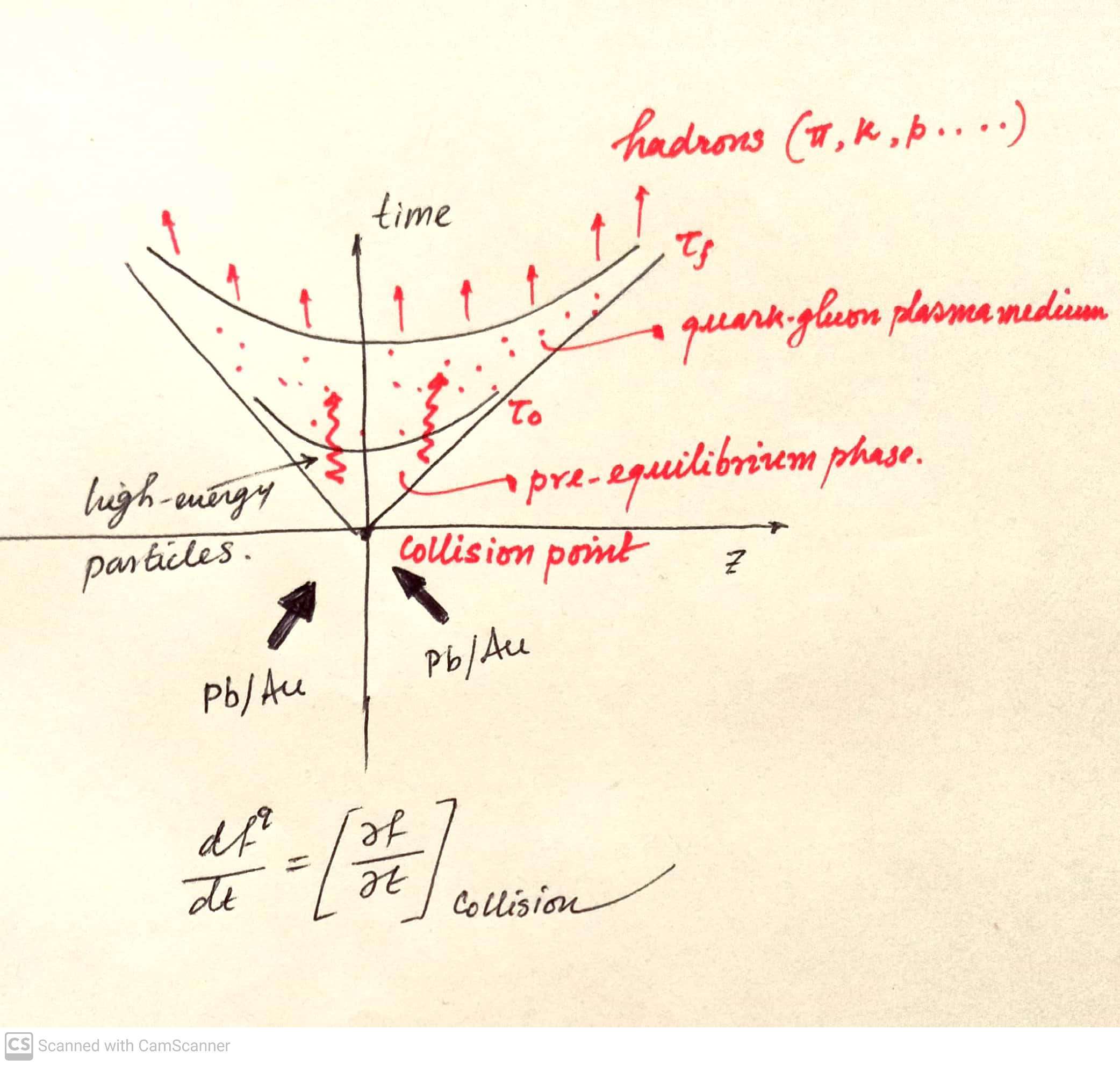Understanding different properties of the quark-gluon plasma (QGP) medium produced at the Large Hadron Collider (LHC at CERN) and the Relativistic Heavy Ion Collider (RHIC at BNL) by colliding very fast ions is an active field of research. One of the ways to study its properties is to examine the passage of high-energy particles produced right after the collision through the medium which takes some time to form. After some time, this medium of quarks and gluons and other particles transform into hadrons and this process experiences intrinsic fluctuations and long-range correlation. In this case, there is some kind of stationary state which is not given by the usual Boltzmann-Gibbs statistics but by the Tsallis statistics proposed by C. Tsallis in 1988. In this project, we will study how the statistics proposed by Tsallis helps us understand the evolution of high-energy particles inside QGP and shed light upon its properties.
Tasks
(1) A brief review of the aspects of QGP; (2) Understanding the role of high-energy particles as the probes of QGP; (3) Evolution of the high-energy particle distribution inside QGP (4) Understanding the role of the Tsallis statistics in this evolution; (5) Connecting our findings to the experimental observables; (6) Reviewing results and preparing a draft of the report.
Preliminary schedule by topics/tasks
Week 1: Studying the basics of the physics of QGP; Week 2-3: Studying evolution of energetic particles inside QGP from the Boltzmann-Gibbs and the Tsallis point of view; Week 4: Connecting to experimental observables; Week 5: Reviewing the findings and preparing a draft
Required skills
Thorough knowledge of thermodynamics and statistical mechanics is required. Basic level familiarity with Mathematica will be an added advantage. Familiarity with LaTeX is necessary.
Acquired skills and experience
Participant will gain familiarity with the basic physics of QGP. She/he will understand the role of the Tsallis statistics in studying the transport properties of high-energy particles travelling through QGP. She/he is also expected to increase the skills in performing symbolic and numerical computations using Mathematica.
Recommended literature
(1) A Random Walk with Heavy Flavours (in Physics of Quark Gluon Plasma: An Update and the Status Report), S. Mazumder et al, Advances in High Energy Physics Volume 2013, Article ID 136587, http://dx.doi.org/10.1155/2013/136587 (2) C Tsallis, Introduction to non extensive statistical mechanics, Springer Science+Business Media (2009).



